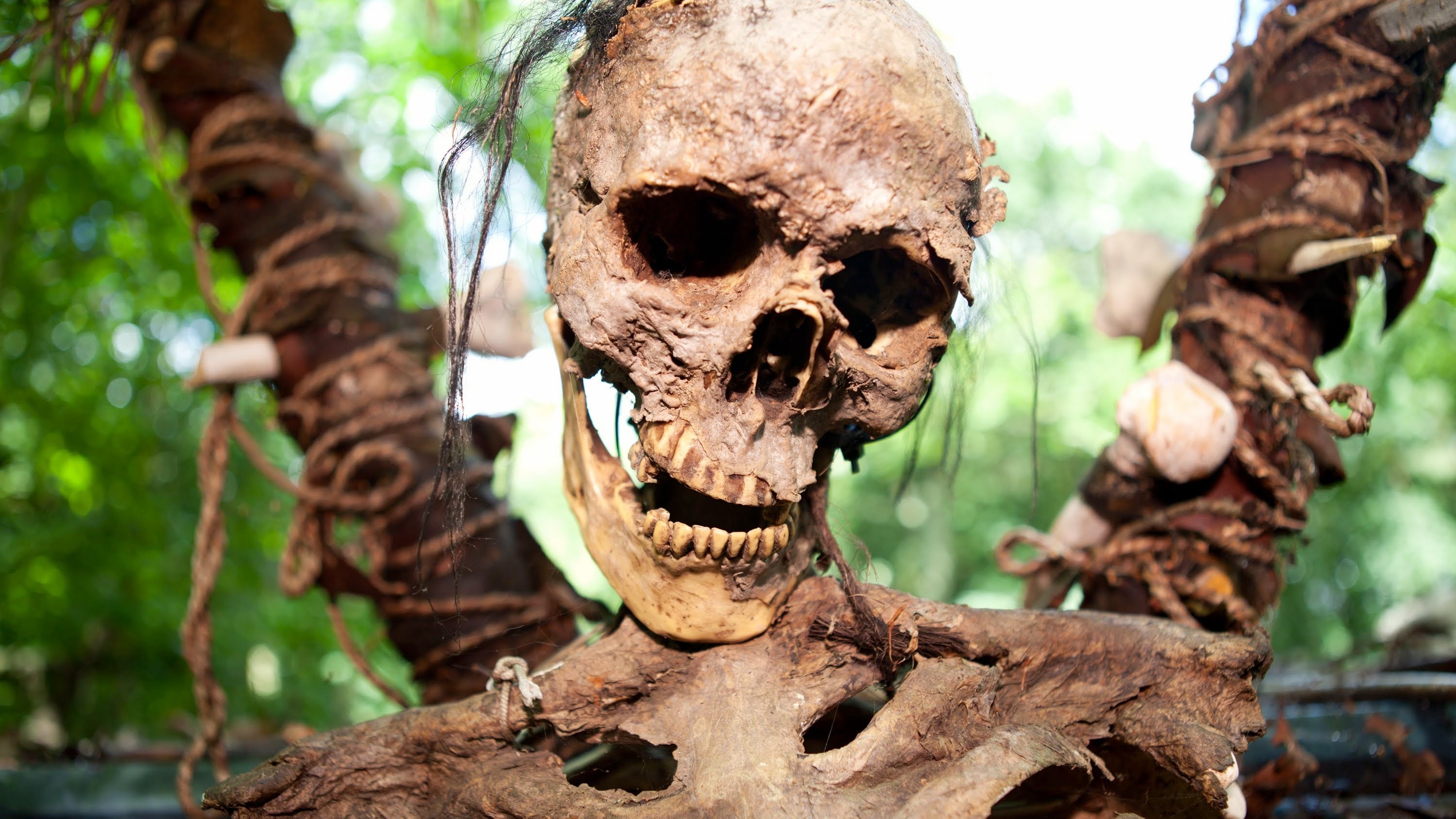
In a story from the Isle of Lesbos the dragon must receive a human victim twice a day. Curiously enough, an old authority tells us that the people of Lesbos were directed to throw a virgin into the sea to Poseidon, and the hero who vainly tried to save her reappeared years later with a wonderful cup of gold (Hartland, iii. 43 seq., 79, see Athenaeus xi. 15).
In the Chinese annals of Khotan in Kashgar, when a certain stream dried up, a female dragon declared that her husband had died; one of the royal grandees sacrificed himself to meet the want, the water flowed once more, and the “husband” of the being became the guardian of the kingdom's prosperity.
A careful study of all the related traditions suggests that they preserve an unmistakable recollection of human sacrifice to serpents and other spirits of the water, and that the familiar story of the hero who vanquishes the demon and rescues the victim (usually a female, and especially a virgin) testifies to the suppression of the rite.
An extremely rich dynasty in the Upper Niger was said to owe its wealth to a serpent in a well which received yearly a maiden attired as a bride; the cessation of the practice brought drought and sickness (Hartland iii. 57 seq.).
In Mexico the half-serpent Ahuizotl dragged into its pool hapless passers-by; however, their souls were supposed to go to the terrestrial paradise and the relatives became rich through the unhappy accident (Hartland, 86 seq.).
But in India human sacrifice was actually made in the expectation of gaining hidden treasure, and doubtless we have a survival of this when snake-charmers, for a drop of blood from the finger of a first-born, will track the snakes which are guardians of treasure (Crooke ii. 135, 170 seq.). Indian traditions tell how reformers have persuaded the people in the past to stop their human sacrifices to serpent-spirits (Fergusson, 64, Oldham, 101), and a survival may be recognized in parts of the N.W. Provinces when, at the Guruī serpent-festival, women make vicarious offerings by throwing to Nāg Deotā, the river demon, dolls which the village lads beat with long switches (Crooke ii. 139).
It is unnecessary to refer more fully to the evidence for former human sacrifice or to the popular stories and grim superstitions which indicate its persistence; the grisly custom of our ancestors has been attested by comparatively recent observation in Mexico. Peru, Fiji, Europe, and elsewhere.
Thus, is it correct to say that human sacrifices are and were a cultural construct or can the sacrifices be attributed to the religions in which sacrificing groups followed? How might this be determined by looking in retrospect at various human sacrifices throughout the world?
Reference[s]
James Fergusson, Tree and Serpent Worship, or Illustrations of Mythology and Art in India (2nd ed., London, 1873); also M. Winternitz, “der Sarpabali, ein altindischer Schlangen-cult,” in Mitteil. d. anthrop. Gesell. of Vienna, xviii. (1888), pp. 25-52, 250-264. Both give abundant information on the various features of serpent-cults.
Fergusson, p. 259. Perhaps the sloughing more than any other feature stimulated primitive speculation; cf. Winternitz, p. 28.
Crooke, ii. 1 and 33 sqq.; C. G. Leland, Etruscan Roman Remains, p. 283; Winternitz 37 seq.; A. W. Buckland, Anthropological Studies (1891), pp. 104-139 (on serpents in connexion with metallurgy and precious stones).
Fergusson, 65; Crooke ii. 124; Oldham, 37, 85 sqq., 2OO sqq.; Maclennan, p. 526 seq.
E. S. Hartland, Primitive Paternity (1909); Frazer, Adonis (Index, s.v. Conception), and Totemism and Exogamy (1910; Index, s.vv. “Conception,” “Snake”).
E. S. Hartland, The Legend of Perseus (1894-1896), i. 121. In many places streams or springs are credited with the power of removing barrenness which, in primitive thought, is often ascribed to supernatural malevolence. See Hartland, op. cit., i. 71 sqq., 133, 167 sqq.
Comments
Post a Comment